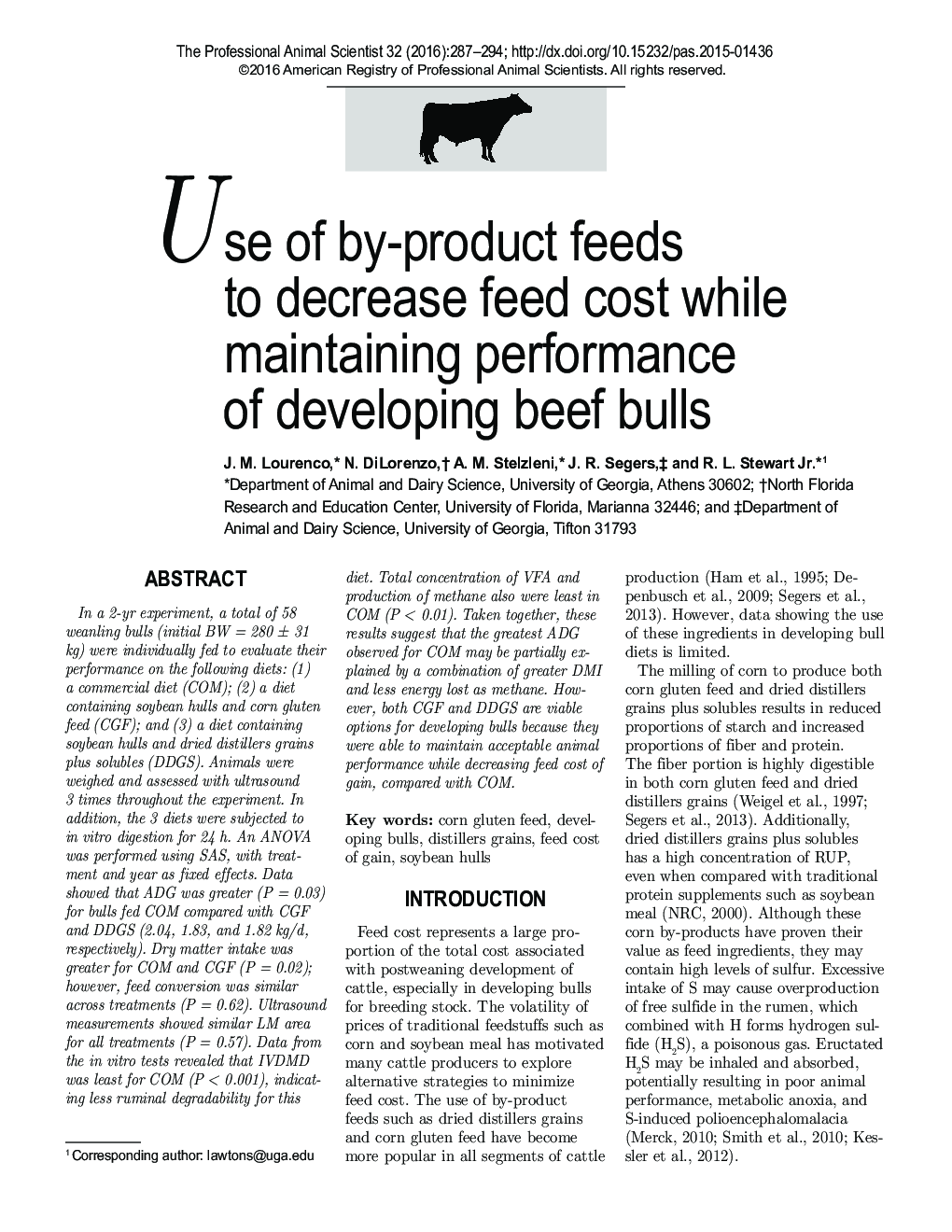| Article ID | Journal | Published Year | Pages | File Type |
|---|---|---|---|---|
| 10161701 | The Professional Animal Scientist | 2016 | 8 Pages |
Abstract
In a 2-yr experiment, a total of 58 weanling bulls (initial BW = 280 ± 31 kg) were individually fed to evaluate their performance on the following diets: (1) a commercial diet (COM); (2) a diet containing soybean hulls and corn gluten feed (CGF); and (3) a diet containing soybean hulls and dried distillers grains plus solubles (DDGS). Animals were weighed and assessed with ultrasound 3 times throughout the experiment. In addition, the 3 diets were subjected to in vitro digestion for 24 h. An ANOVA was performed using SAS, with treatment and year as fixed effects. Data showed that ADG was greater (P = 0.03) for bulls fed COM compared with CGF and DDGS (2.04, 1.83, and 1.82 kg/d, respectively). Dry matter intake was greater for COM and CGF (P = 0.02); however, feed conversion was similar across treatments (P = 0.62). Ultrasound measurements showed similar LM area for all treatments (P = 0.57). Data from the in vitro tests revealed that IVDMD was least for COM (P < 0.001), indicating less ruminal degradability for this diet. Total concentration of VFA and production of methane also were least in COM (P < 0.01). Taken together, these results suggest that the greatest ADG observed for COM may be partially explained by a combination of greater DMI and less energy lost as methane. However, both CGF and DDGS are viable options for developing bulls because they were able to maintain acceptable animal performance while decreasing feed cost of gain, compared with COM.
Related Topics
Life Sciences
Agricultural and Biological Sciences
Animal Science and Zoology
Authors
J.M. Lourenco, N. DiLorenzo, A.M. Stelzleni, J.R. Segers, R.L. Jr.,
